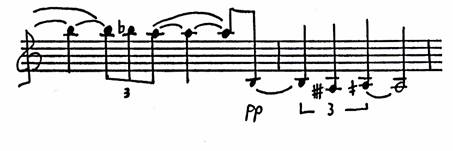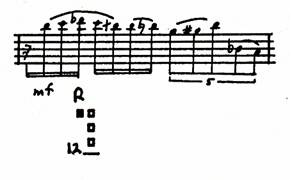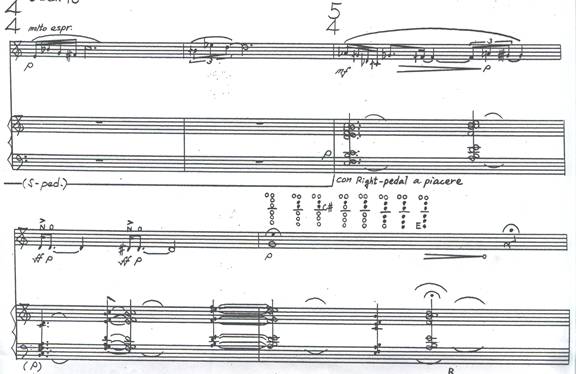| The Clarinet of the Twenty-First Century - E. Michael Richards |
CHAPTER 2 - Single Sounds
Quarter-Tones
The following quarter-tone scale extends from A3 to D6; it contains relatively few problems for the clarinetist. However, somewhat weak conjunct sections of the quarter-tone scale are found across the "break" from the throat register to the clarion register (B-flat 4 to D-sharp 4).32 From B-flat 4 to C4 there are technical problems because of awkward finger placement requirements. From C4 to D-sharp 4 there are no practical fingerings for quarter-tones, since virtually the entire length of the instrument is employed. Cross fingerings can not be utilized. This is the same consideration that inhibits quarter-tone production below chalumeau A. Another section of the quarter-tone scale that is weak consists of pitches above B6. The altered air and embouchure pressure necessary to produce these pitches (often on different partials), as well as awkward fingerings make them treacherous, especially if approached quickly by leap.
TABLE #6 - Quarter Tone Scale
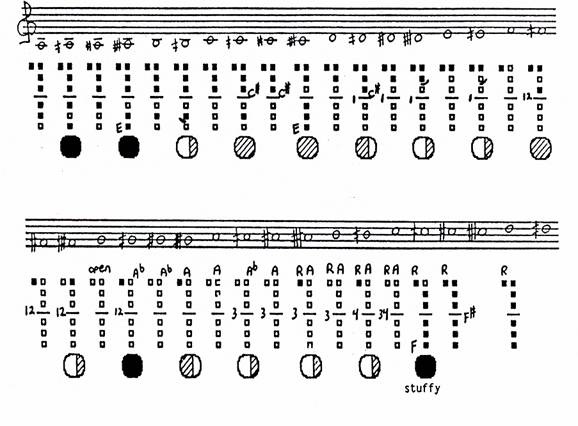
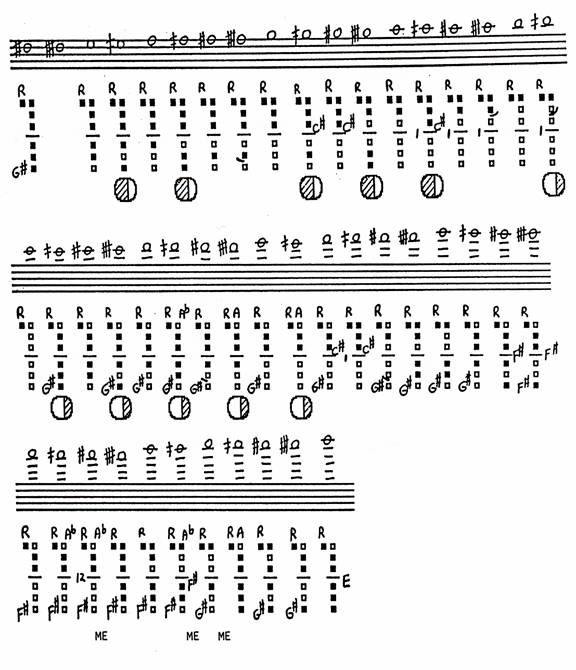
The clarinetist should practice tuning these quarter-tones by first playing the half-step, and subsequently adding the quarter-tone. This process will lead to an improved level of quarter-tone intonation.
[below are some musical examples of quarter tones - for others, click here]
Drake Mabry, another American composer, adopts the use of quarter-tones for several musical purposes in his Street Cries (1983) for solo clarinet. One application takes the form of a repetition or echo device (Example #53).
Example #53
measures 6-7, mvt. I
measures 36-7, mvt. I
These repetitions are not only a quarter-tone removed, but also display a strikingly different timbre. Measure 7 is not only much softer than measure 6, but has a thinner sound. Measure 37 sounds thicker and darker than measure 36. This echo technique is also employed in the second movement (Example #54).
Example #54
measures 23-4, mvt. II
In this example, the repetition sounds much darker because of its quarter-tones, lower dynamic level, and shift to the lower register.
Mabry employs another timbre manipulation in a completely different context in the first movement. The very dark quality of the quarter-tones in measures 8 and 9 adds another dimension to the conflicting patterns of pitch and articulation (Example #55).
Example #55
measures 8-9, mvt. I
One more example of timbre contrast in the first movement occurs in measure 38, where the D-flat should be fingered in the following manner to preserve the bright quality of the line (Example #56).
Example #56
This helps to vividly contrast the thick timbres of measure 37.
A final illustration in Mabry's Street Cries of timbre contrast through quarter-tones is drawn from the third movement. A "composite fingering" is used to produce four different pitches with very minimal technical changes. This fingering helps to produce substantial timbre differences as well as dynamic differences among the four pitches (Example #57).
Example #57

Akira Nishimura wrote Madoromi III in 2003, commissioned by and dedicated to the Tanosaki-Richards Duo. The work makes extensive use of quarter-tones and microtones which support the program of the music.
Translated to English, madoromi means ‘under the spell of sleep….a strong desire (or lack of resistance) to sleep…drift into sleep with strong power.' The type of sleep, itself is shallow, but the dreams that one experiences are often more realistic than reality. I wanted to write music that floats between the surface wave of this inner world.
In the passage below, Nishimura writes quarter-tones for the clarinet that combine with acoustical beats from the piano pedaling and clusters to create music that fades in and out of focus. This focus is further affected by the extreme color contrasts (dark and muffled) of the clarinet G quarter-tone sharp and F quarter-tone-sharp, and the alternate fingerings for D and D-sharp, with the conventional pitches of its line. The clarinet's easy microtonal segment on G also enhances the acoustic beats from its interaction with the sustained piano chords.
Example #67
for information on how to see/hear more musical examples using microtones, click here
|
||


